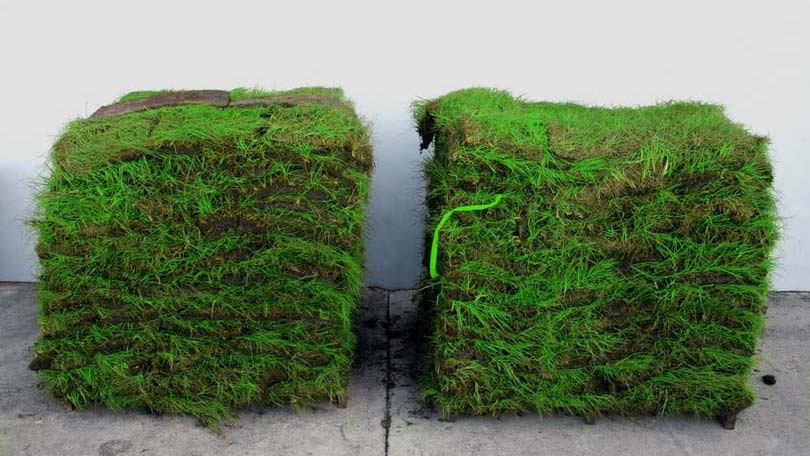
Sod is mature lawn that has been grown and cared for by professional grass growers, and is cut into thick sheets or squares (with the roots still in tact). It is then rolled up, transported, rolled out and replanted to make an instant yard. It’s a much quicker process than planting grass seeds and waiting for them to grow.
Where to Find Sod
Sod is primarily sold at nurseries, but it can be bought in home improvement stores and even ordered online. Costs of sod may vary, but it is appreciable. It takes up to 2 years for the grass to be grown for sod, and it must stay disease free, and is constantly being watered, fertilized, and watershed. It then needs to be cut, stacked, placed on pallets and shipped to wherever it is being sold. This is why a sod lawn costs more than growing it yourself with seeds.
Choosing Sod
It is important to choose the right kind of grass for your family or business needs. Be sure to think about how much traffic will be on your grass. Some lawns can withstand pets and children better than others can. Sod producers and nursery workers can give you an idea of what grass is right for your home, once they know the conditions it will endure and what climate you live in. The type of soil you have is also a big factor in choosing the grass that is right for you. Loam is the best type of soil for sod, but if you have sandy, clay soil, there are specific types of grass that you will want to buy. If you are not sure what type of soil you have, you can have the pH tested by a professional and they can tell you what types of grass are commonly used for your climate and soil conditions.
Once you have ordered your sod and it has been cut, it’s best to plant it within a day of being cut. When receiving your sod, or picking it out, make sure it is not yellowed and that it looks wet and fresh. It is best to receive it on a cooler day, since hot weather can wilt and kill a grass that isn’t properly hydrated. If you cannot plant it immediately, it is important that it stays moist and in a shaded area.
Preparation
To prepare your lawn or lot for sod, the old lawn or weeds and debris need to be removed. The soil should be tilled at least 4 to 6 inches deep. If you are planning to put in an irrigation or sprinkler system, it should be down at this time. You may then wish to till in organic compounds or fertilizers into the soil. Make sure to rake out all roots, rocks, or hard lumps in the soil. You will also need to check to make sure the ground is level, so that water will not pool in one area when the yard is completed. You can then roll the soil to firm up the surface. The soil should be dry and when finished, needs to be about 1 inch below any bordering pavement or rockwork, patio, or walkway. The soil that is attached to the sod blanket will make up for this inch of space.
Planting or Laying Your Sod
Laying sod is a laborsome job. If you do decide to tackle the job yourself, there are a few important rules to follow. It is a lot like laying bricks or concrete. Lay the seams against each other, and stagger the pieces as you would bricks (so that the seams will not be seen as easily). The seams should not overlap and the longest straight line along the side should be laid first. As you work, you should water the pieces lightly to keep it wet. Do not wait to water it. The sod pieces can be cut to fit odd sections and around trees or shrubbery. Once it has been laid, a light rolling of the lawn is recommended, but make sure that is light enough to not leave roller tracks.
The most important step in keeping your new lawn alive is watering it. For the first week to ten days the lawn needs to be watered enough to keep it moist all day and night. If you are in a hotter climate, you may need to water it 2 to 3 times daily. After that, you can water it normally. You should also avoid stepping on it until the grass has taken root.

